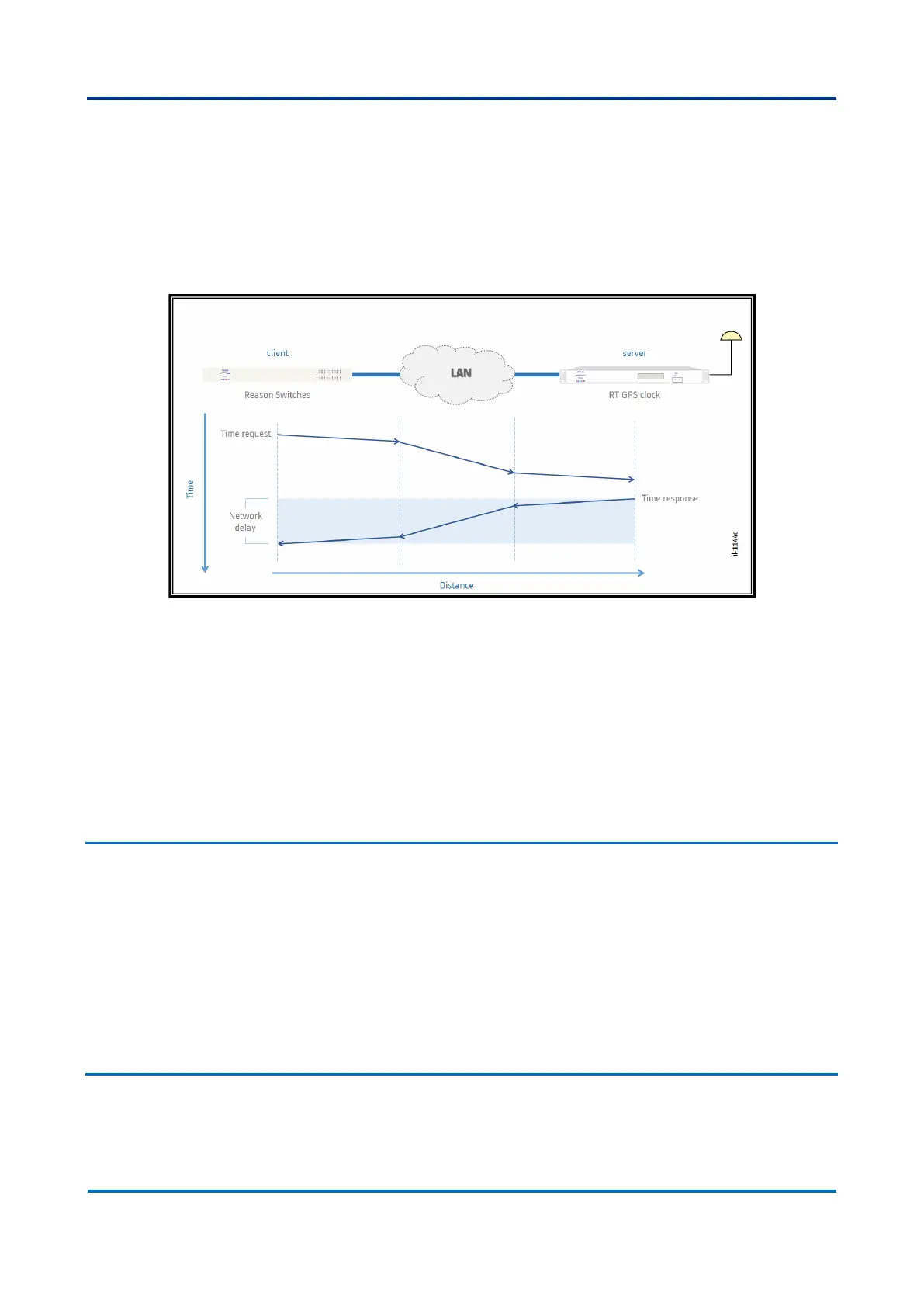NTP (Network Time Protocol) is a networking protocol used to synchronize the clock
of equipment over packet-switched data networks, which suits the Application Layer
on the OSI model. The protocol works in a client-server mode, and it synchronizes the
devices in network within a few milliseconds of accuracy referred to the UTC time.
The current version (NTP version 4) is standardized by RFC 5905.
Figure below shows the basics of the NTP protocol
Figure 6: NTP Time Protocol Mechanism
The Reason Switches can have the internal clock synchronized by up to five NTP time
servers. Time information is used by some protocols, such as syslog, to timestamp
the messages. In power system applications, the general time server is a GNSS
synchronized clock (Stratum 0 precision).
1.4 Time zone
The internal clock of Reason Switches can be synchronized using NTP protocol, which
sends the UTC time (Greenwich Mean Time). When using the equipment in other
regions, the timezone may be set manually to correct the internal clock
The switches can also be configured to correct the internal clock related to the
Daylight Saving Time (DST). If used, the year, month, date, hour and minutes to start
and end the DST shall be defined.
1.5 Log
The log function is a file that records information of a running operating system or
software at a device. Many applications use this for analysis purposes, as it keeps
